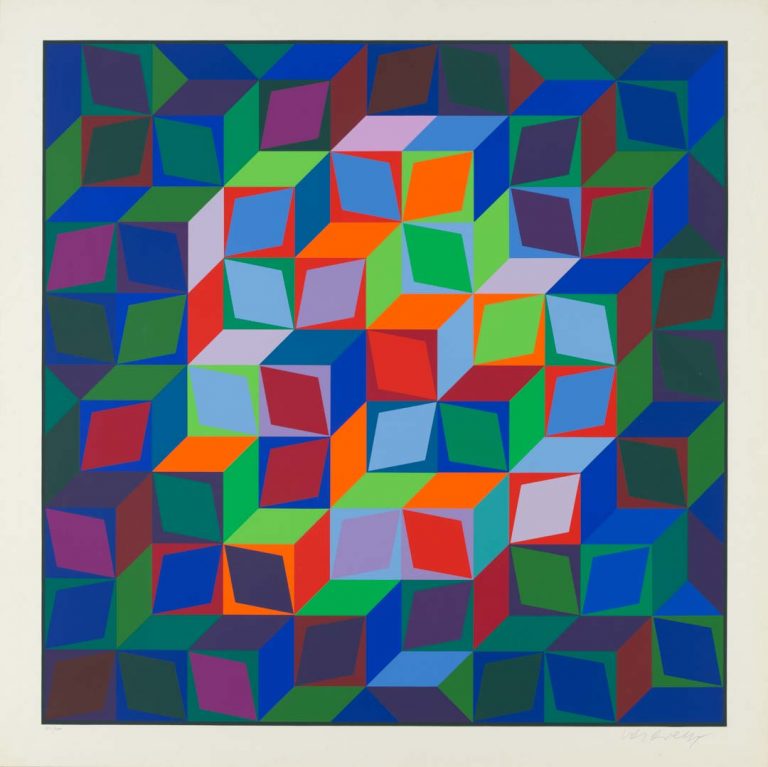We acknowledge the Traditional Owners of the land on which the Queensland Art Gallery | Gallery of Modern Art stands and recognise the creative contribution First Australians make to the art and culture of this country.

Victor Vasarely / France 1908–97 / Untitled (from the ‘Hommage à l’Hexagone’ (‘Homage to the Hexagon’) portfolio) c.1968 / Screenprint on smooth wove paper / 60.6 x 60.6cm / Gift of Mrs Lillian Bosch 1972 / Collection: Queensland Art Gallery | Gallery of Modern Art / © Estate of Victor Vasarely/ADAGP/Copyright Agency, 2020
Victor VasarelyUntitled (from the ‘Hommage à l’Hexagone’ (‘Homage to the Hexagon’) portfolio) c.1968
Not Currently on Display
By the early 1960s, Victor Vasarely had developed a visual language of simple geometric shapes and colours that could be used in endless combinations. Calling it the Folklore Planétaire (Planetary Folklore), he used this lexicon across a number of well-known bodies of work, including the ‘Vonal’, ‘Vega’ and ‘Gestalt’ series.
This print comes from Vasarely’s ‘Hommage à l’hexagone’ (‘Homage to the Hexagon’) portfolio of 1969. Comprising eight prints, the works in the series employ patterns of rhombi and squares, with colour variations creating an illusion of depth.
The work of painter and printmaker Victor Vasarely (born Vásárhelyi Győző in Hungary) is inextricably linked with Op art, a movement that emerged in the 1960s. The proponents of Op art created some of the most striking paintings in the history of Modernism. Vasarely was instrumental in this school of thought, which was based on geometry, optical effects and the relationship between art and science. He studied graphic design at the Mühely Academy, which, at the time, was recognised as Budapest’s centre of Bauhaus studies. In 1930, he relocated to Paris and worked as a graphic designer for advertising agencies.
Following World War Two, Vasarely began to develop his own style of geometric abstraction, influenced by the pioneers of twentieth-century abstract art Piet Mondrian (1872–1944) and Kazimir Malevich (1879–1935). Working with geometric shapes on a grid and with a strict colour palette, he began to produce optical effects — movement, swelling, warping, flashing patterns and hidden images. In 1965, Vasarely’s work was included in ‘The Responsive Eye’ exhibition at The Museum of Modern Art, in New York, alongside the work of other artists working with optical styles, such as the English painter Bridget Riley (b.1931).